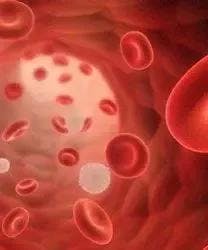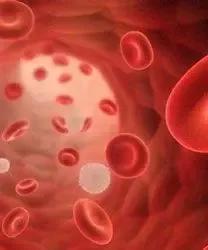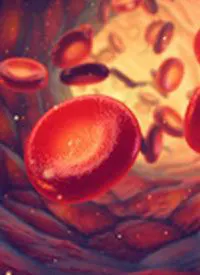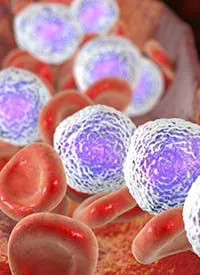Patients with multiple myeloma can mitigate the common oral and dermatologic toxicities associated with talquetamab with early intervention tactics.
Effective methods of mitigating oral and dermatologic treatment-emergent adverse events (TEAEs) commonly reported with talquetamab may include preventative tactics initiated at the start of therapy. In a presentation during the 19th International Myeloma Society Annual Meeting, Elizabeth Aronson, MSN, FNP-BCN, OCN, noted that patients with relapsed or refractory multiple myeloma experience severe dryness that commonly present as oral and dermatologic AEs.1
Aronson is a clinical nurse practitioner specializing in bone marrow transplant and immune effector cell therapies at Mount Sinai Hospital. In her role, Aronson cares for patients enrolled in the phase 1 MonumenTAL-1 trial (NCT03399799), a dose-escalation/dose-expansions study seeking to characterize the safety profile and recommended phase 2 dose for talquetamab, a novel CD3 X GPRC5D bispecific antibody, in patients with multiple myeloma who either have relapsed/refractory disease or are ineligible for other available treatment options.2
Patients enrolled in MomumenTAL-1 were assigned to a dose level and either the subcutaneous (n = 24; 31.6%) or intravenous (IV) dosing cohort (n = 52; 68.4%). The range for dosing was biweekly or weekly treatment at a dosage of 1.5 to 180 µg/kg with IV administration and 5 to 800 µg/kg with subcutaneous treatment.
Investigators used a step-up dosing schema and premedications to mitigate AEs. After initial priming, patients received either weekly or biweekly dosing throughout the study duration. At the time of data cut-off, 76 patients had been enrolled in the trial at Mount Sinai Hospital.
According to Aronson, this is an agent with an exciting efficacy profile for a population of patients facing a poor prognosis; at the European Hematological Association Congress 2022, updated phase 1 findings from the trial showed an overall response rate of 64% to 70%. In June 2022, the FDA granted talquetamab a breakthrough therapy designation.3
Ongoing trials are assessing the optimal phase 2 dose, as well as assessing the agent’s efficacy in combination with approved and investigational therapy.
As with most new agents, assessing and responding to the AEs brought on by novel treatments is critical in ensuring that patients can continue with these therapies.
“Nursing education, support, and management is absolutely vital,” Aronson said in a presentation on the agent’s AE profile during the International Myeloma Society’s 6th Annual Nursing Symposium.
The most common AEs related to treatment with talquetamab include cytokine release syndrome (CRS), neurotoxicity, cytopenia, infections, skin and nail disorders, and oral toxicities. CRS and cytopenia were primarily observed in early cycles and were reversable. Oral and dermatologic TEAEs, though generally mild, present an opportunity for oncology nurses to improve patient quality of life. For now, the best preventative and therapeutic approaches to dermatologic and oral AEs have yet to be identified.
Oral TEAEs
Oral TEAEs were common in the trial with 57.9% of patients (n = 44) experiencing a grade 1 or 2 oral AE. Of these, dysgeusia, dry mouth, and dysphagia were the most experienced symptoms. In total, 55.3% of patients experienced dysgeusia, 21.1% experienced dry mouth, and 22.4% experienced dysphagia. The median time to onset was 26.5, 6.7, and 41.5 days, respectively.
Although all oral symptoms were categorized as grade 1 or 2, they still had a significant effect on quality of life and treatment continuation; dysgeusia was responsible for 3 cases of dose interruptions, 1 case of dose reduction, and 1 treatment discontinuation; dysphagia was the catalyst for 3 cases of treatment interruptions. No modifications were caused by dry mouth.
“Taste changes were very common,” Aronson said. “Patients would describe this as everything tasting like cardboard or sawdust, or that things that they used to enjoy now tasted completely different.”
“I lost a lot of sleep over this,” Aronson shared, noting that her patients were distressed by these AEs. “We tried several things. Good oral care is really key,” she said, adding that the standard recommendations to prevent mucositis for patients about to undergo transplant are relevant with this patient population as well to reduce the bioburden in the mouth.
“Biotin sprays, gels, candies, you name it,” she said. “Also, I discourage patients from putting fans next to their bed, because a lot of patients would say they really noticed it was worse at night.”
Other clinical pearls, according to Aronson, include certain dietary modifications and early treatment of oral candida.
Nurses should encourage patients to incorporate thin liquids into their diet. This means “slippery stuff [that] goes down,” she explained. “Lots of liquids, smoothies, small bites, [and teaching them to] sit upright when they eat [and] wash everything down with liquid—because it seems that dryness was just extending all the way down the upper gastrointestinal [GI] tract.”
“A take home is the early treatment of oral candida,” she concluded. “Many patients who reported burning, glossitis, we would treat for candida because our [ear nose and throat] ENT doctor felt that in the setting of such severe dryness, they may not present with oral plaques. Many [of these] patients reported rapid improvement once we treated them.”
Dermatologic TEAEs
Dermatologic TEAEs were reported by 48.7% (n = 37) of patients in this trial. Palmar/plantar desquamation was the most prevalent dermatologic TEAE and occurred in 33.9% (n = 25) of patients, followed in close succession by nail disorders (17%) and systemic rash (7.9%). Injection-site reactions were observed in 7.9% of patients. Grade ranged from grade 1 to grade 3 for the dermatologic events. A total of 5 patients experienced dose interruptions because of a TEAE.
As with the oral reactions, Aronson acknowledged that no therapeutic interventions have been identified as best practice in addressing dermatologic reactions. However, in her practice, certain interventions have proven useful in mitigating some of the toxicities experienced by patients.
“My colleague would tell patients your skin is going to peel like a lizard on your hands and feet,” she said. “It is graphic, but it prepared patients for what to expect.”
For patients experiencing palmar/plantar desquamation, ammonium lactate lotion, and emollients have shown efficacy.
“This typically occurs on both the palms and the soles of the feet,” she said. “We would prescribe an ammonium lactate lotion to help with that turnover and also recommend a very heavy moisturizer [such as] Aquaphor or vanicream.”
Oral antihistamines and topical corticosteroids are useful in addressing a body rash and injection-site reactions. A medrol dose (Pak) may be used for more severe cases. For nail changes, Aronson recommends nail hardeners, Vitamin E lotion, and cuticle care products.
“Our dermatologist recommended against do a nail soaks,” she noted. “She [noted] that that would increase the incidence of fungal issues. We have lot of patients start a nail hardener at the onset of therapy.”
Overall, with both oral and dermatologic therapies, Aronson’s best advice is hydration.
“Hydrate, hydrate, hydrate,” she said. “It seems the total effect is a real drying effect. I tell patients to take a lukewarm or cool shower, [to use] heavy lubricants, body oil, those kinds of things—because the dryness is really severe.”
Dose delays may also be an effective method of mitigating oral and dermatologic therapies, she concluded.
References
Aronson E. Characterization and management of oral and dermatological toxicities in patients receiving the CD3 X GPRC5D bispecific antibody talquetamab for the treatment of relapsed/refractory multiple myeloma. Presented at: International Myeloma Society 6th Annual Nursing Symposium; August 25-27, 2022; Los Angeles, CA. NS-001.
Minnema MC, Krishnan A, Berdeja JG, et al. Talquetamab, a G protein-coupled receptor family C group 5 member D X CD3 bispecific antibody, in relapsed/refractory multiple myeloma: updated efficacy and safety results from MonumenTAL-1. Presented at: European Hematology Association Congress 2022; June 9-12, 2022; Vienna, Austria. Abstract S182. Accessed August 25, 2022. https://bit.ly/3NDAZqo
Janssen announces US FDA breakthrough therapy designation granted for talquetamab for the treatment of relapsed or refractory multiple myeloma. News release. The Janssen Pharmaceutical Companies of Johnson & Johnson. June 29, 2022. Accessed August 25, 2022. https://bit.ly/3nnpKHQ









Post comments